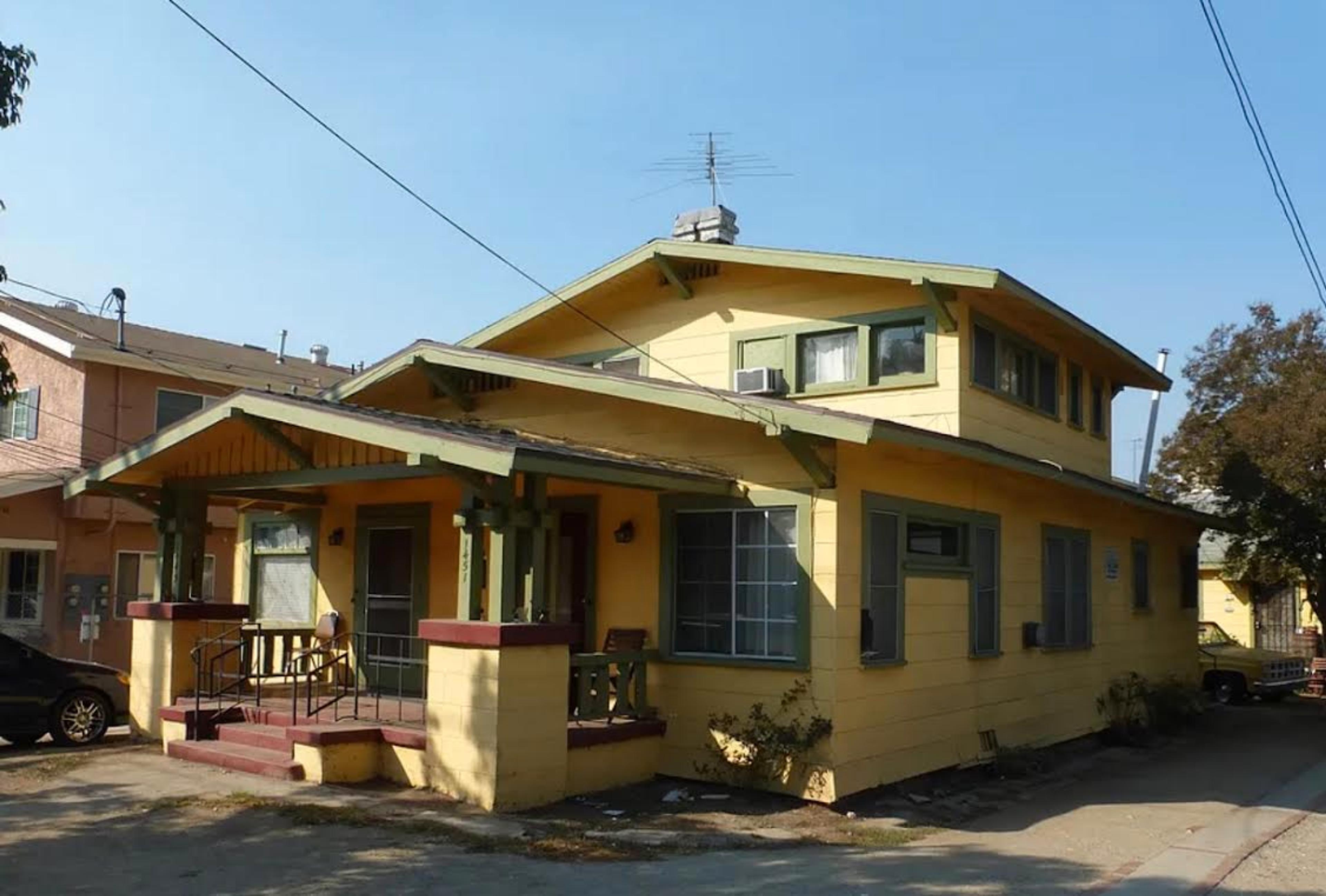Here’s 1449-51 Echo Park Avenue. Built by Charles Wiggers in early 1914.
Echo Park Ave. as it stretches north is a time machine of one-story houses and vintage two-story apartments. Just for fun let's look both ways up and down the street:
Naturally, dead-center in the block, they’re gonna put this thing, a giant view-blocking rectangle, three times as high as anything remotely in the vicinity:
This actually went to appeal, because neighbors objected to the eight-unit density bonus and one-story height increase above zoning laws, and City Planning just laughed. Kenihan Development, developers from Marina Del Rey building the thing, laughed so loud you could hear them from Cast & Plow.
56-feet, 27 units, with commercial at the bottom.
Hey, you get what you vote for. Despite Cedillo being demonstrably terrible regarding everything, an identical project across the street was shot down by him; this one was rubber stamped under Terrible O'Farrell, who I guess therefore beats Cedillo in the Terrible Olympics.
About Nathan Marsak
NATHAN MARSAK says: “I came to praise Los Angeles, not to bury her. And yet developers, City Hall and social reformers work in concert to effect wholesale demolition, removing the human scale of my town, tossing its charm into a landfill. The least I can do is memorialize in real time those places worth noting, as they slide inexorably into memory. In college I studied under Banham. I learned to love Los Angeles via Reyner’s teachings (and came to abjure Mike Davis and his lurid, fanciful, laughably-researched assertions). In grad school I focused on visionary urbanism and technological utopianism—so while some may find the premise of preserving communities so much ill-considered reactionary twaddle, at least I have a background in the other side. Anyway, I moved to Los Angeles, and began to document. I drove about shooting neon signs. I put endless miles across the Plains of Id on the old Packard as part of the 1947project; when Kim Cooper blogged about some bad lunch meat in Compton, I drove down to there to check on the scene of the crime (never via freeway—you can’t really learn Los Angeles unless you study her from the surface streets). But in short order one landmark after another disappeared. Few demolitions are as contentious or high profile as the Ambassador or Parker Center; rather, it is all the little houses and commercial buildings the social engineers are desperate to destroy in the name of the Greater Good. The fabric of our city is woven together by communities and neighborhoods who no longer have a say in their zoning or planning so it’s important to shine a light on these vanishing treasures, now, before the remarkable character of our city is wiped away like a stain from a countertop. (But Nathan, you say, it’s just this one house—no, it isn’t. Principiis obsta, finem respice.) And who knows, one might even be saved. Excelsior!””
Nathan’s blogs are: Bunker Hill Los Angeles, RIP Los Angeles & On Bunker Hill.
